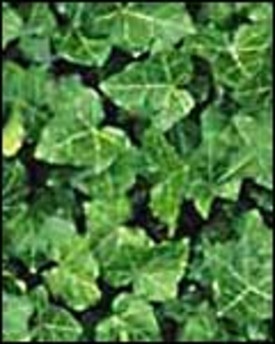 |
||
|
|
As the leaves fall away from trees, shrubs and flower beds, evergreen foliage becomes more noticeable and more cherished. None so much as the ground covers that keep the bare earth green during the darkening days of winter. Planting time for ground covers is in spring when their rooting hormones run, but thinking time for them is now and through the winter. As the leaves fall, and beds become bare, look around and see where you wish you had some greenery.
One nice thing about ground covers is that you don’t have to rake out the leaves. Though they may lie atop the ground cover plants now, as winter proceeds, they will drop through to the ground, to decay into nice healthful compost. And this will happen without your lifting a finger to help. When you plant ground covers near each other, they compete for their place. I have done that and ended up with certain ones winning, and others being lost. When I was young and naive, I thought a border of moss would be more elegant than just plain pachysandra along the front walk. Little did I know. One can find lots of lists of ground covers, but they never tell you how each will grow over time. And more important , who wins when they fight with each other for space and light.
So here is a list of some temperate region evergreen ground covers that prefer shade beginning with the wimps and ending with the most invasive.
Moss – This very delicate, soft, undulating choice ground cover is the sophisticated gardener’s dream. However, it’s hard to establish and has to be hand weeded several times a year. My pachysandra has totally overgrown the elegant moss border. It’s gone. Moss likes dank, shady, acid soil. Buttermilk is the old fashioned way to get it going. Clumps and patches are planted in suitable locations. There are many varieties. It will often grow spontaneously in an area that has been treated with herbicides where most other plants won’t take hold.
European Ginger – Another very choice ground cover with shiny heart shaped leaves. It’s slow to establish and needs to be hand weeded or most other plants will overwhelm it.
Ajuga whose other name is bugle weed (which immediately tells you it is not so choice) spreads rapidly. It has leaves that stay bronze or reddish throughout winter and blue flower stalks cover it in May and June. After flowering, these can be mowed, or weed-whacked off and it stays nice, neat and carefree all summer. Though it prefers semi-shade, it will do well in sun. Though it’s tough enough to overgrow ginger or moss, ajuga will be overtaken by all the more vigorous ground covers that follow.
Myrtle – Also called periwinkle or vinca, is my favorite. It stays neat. It has nice, small green leaves plus blue or white flowers in spring. Although it’s a vigorous spreader, it does not climb , however, it will overgrow a perennial bed and has to be pulled off small plants. Because it is low and somewhat delicate, tough perennial plants can co-exist and grow through it. Among them aretall daylilies, lily of the valley, hayscented fern, wild geranium, w ild anemone and false solomon’s seal. Myrtle is subject to rot diseases so may not survive under a sprinkler system. I only water mine when the leaves begin to droop during droughts, which is seldom. In time, pachysandra, euonymus and ivy will overrun myrtle, so it should be kept in a bed by itself.
Pachysandra – This tough Japanese spurge spreads rapidly by underground runners if planted in spring. A shade lover, in sun the foliage will often turn yellowish, but if kept moist , usually survives. It gets leggy and messy looking, which can be solved by a mowing or weed-whacking at about 3 inches in spring. New green shoots will appear.
Baltic Ivy is a classic ground cover vine, nice, shiny green and very useful. It too gets messy, but can be mowed, and after a few weeks, will put out new leaves. It’s main problem is that it spreads up, down, on buildings, shrubs, trees, in the lawn, over the other ground covers, in the flower beds. Hand pulling is all that works, and that’s a pain. Use it where it can just be let grow. It’s good to cover chain link fences. I have finally resigned myself to a large section of nice baltic ivy lawn which gets mowed a few times a year.
Euonymus (E. radicans) is an even more vigorous climbing vine that performs about like ivy, except that it’s taller, irregular, and gets scale insects. However, it works well where one want something to climb up a dead tree trunk or fill an area with a tall mound of stuff. (Not all euonymus varieties are evergreen.)
Credit: Mother’s Garden




























